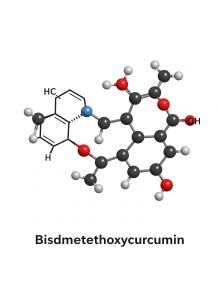Bisdemethoxycurcumin
Analytical
Code: 127580
one of the principal curcuminoids in turmeric, exhibits a broad spectrum of therapeutic effects. It shows strong anti-inflammatory and antioxidant activities by inhibiting TNF‑α-induced NF‑κB signaling and promoting Nrf2-mediated expression of heme oxygenase-1 (HO‑1), which boosts cellular antioxidant capacity.
Bisdemethoxycurcumin
one of the principal curcuminoids in turmeric, exhibits a broad spectrum of therapeutic effects. It shows strong anti-inflammatory and antioxidant activities by inhibiting TNF‑α-induced NF‑κB signaling and promoting Nrf2-mediated expression of heme oxygenase-1 (HO‑1), which boosts cellular antioxidant capacity.
| Mechanism | - |
| Appearance | - |
| Longevity | - |
| Strength | - |
| Storage | - |
| Shelf Life | - |
| Allergen(s) | - |
| Dosage (Range) | - |
| Recommended Dosage | - |
| Dosage (Per Day) | - |
| Recommended Dosage (Per Day) | - |
| Mix Method | - |
| Heat Resistance | - |
| Stable in pH range | - |
| Solubility | - |
| Product Types | - |
| INCI | - |
Purchase History for
Loading purchase history...
Cart
No products
Subtotal:
฿0.00
Total
฿0.00
THB



